Online Class: Digital Literacy and Security

-
15Lessons
-
22Exams &
Assignments -
6Hours
average time -
0.6CEUs
Course Description
Course Title: Digital Literacy and Security
Course Description:
In the era where our lives are woven intricately with the digital world, the ability to navigate and thrive with confidence in this digital landscape is not merely a skill--it's an essential life tool. Welcome to the transformative journey of Digital Literacy and Security, a course crafted not just to inform but to empower and inspire you.
Imagine a future where every click you make on your digital devices isn't met with a question mark of insecurity or uncertainty but with informed assurance. The path to this future starts here. In this course, you're not just a passive consumer of information; most importantly, you become a fortified digital citizen. You will be equipped with the knowledge that transforms challenges into opportunities, enhancing your effectiveness in both your personal and professional life.
Dive into the fascinating progression of the internet, tracing its roots from the innovative ARPANET to the dynamic global network it is today. This journey isn't just about history; it's about understanding modern digital dynamics critically and securely. As we decode the complex architecture of the internet, you will unlock a treasure trove of potential--an intricate web that, once understood, becomes a realm of infinite possibilities and innovation at your fingertips.
Through immersive narratives, welcome the art of search engines into your realm of expertise. Learn to navigate through the noise, scrutinizing sources with a critical eye to escape the confines of echo chambers and misinformation. Arm yourself with tools of discernment that allow you to not just surf the net but ride the waves of data with precision and clarity.
This isn't just a course; it's a gateway to mastering the cybersecurity ecosystem, a domain no modern professional can afford to ignore. Imagine being able to identify and sidestep the traps set by digital threats. Here, your vigilance evolves from mere concern into an active shield against phishing and malware. This metamorphosis is an outcome of continuous learning embedded in every lesson, ensuring that your digital presence is not just safe but sophisticatedly secure.
Explore the intricacies of your digital footprint and learn to transform it into an asset rather than a liability. Your online digital presence is more than just data--it's a reflection of you. This course guides you in managing your digital identity with the same care and strategy you apply to personal relationships and professional networks, thus enhancing your life's narrative digitally.
Delve into the psychological underpinnings of digital threats to understand the tactics of manipulation and learn to anticipate and counter them effectively. These insights transform threats into an opportunity to bolster your defenses with shrewdness and preparedness.
Encryption will no longer feel like a concept meant for only computer scientists. It becomes your everyday ally in securing data, a simple yet powerful tool you'll wield with the confidence of a seasoned digital emissary.
Consider password security as your frontline defense--a trust you will be trained to maintain and fortify robustly. With practice and tools like password managers and Multi-Factor Authentication (MFA), you'll navigate this realm with enhanced confidence.
Beyond the nuts and bolts of technology, embrace the ethical dimensions of digital privacy laws, finding resonance with the principles of integrity and responsibility. In this course, you are not just a learner; you emerge as a conscientious digital architect, mindful of the impact you have and the legacy you leave in the digital world.
Join us on this incredible journey to discover not just the mechanics of digital safety and literacy but to unlock a future where the digital arena becomes your realm of opportunity. Let this course be the catalyst that propels your digital confidence, turning uncertainty into mastery, and aspirations into achievements. The gateway to mastering digital wisdom and security awaits you--step through it with us. Your transformative digital journey begins now.
- Business
- Business Ethics Courses
- Harassment Prevention Courses
- Human Resources Certifications
- Management
- Aromatherapy Courses
- Caregiver Courses
- Career Development Courses
- Communications Courses
- Confidence and Self Esteem Courses
- Healing
- Human Anatomy Courses
- Medical Skills
- Health & Medicine
- Nutrition
- Marketing
- Microsoft Office Certification Courses
- Life Coaching Courses
- Self-Improvement
- Small Business Certifications
- Safety
- Writing Improvement
- Business Writing Courses
Course Lessons
Lesson 1. Digital Fundamentals and Their Secure Path in the Modern World
 Review Practice Worksheet: Lesson-1-WorkSheet-25485.pdf
Review Practice Worksheet: Lesson-1-WorkSheet-25485.pdf Lesson discussions: Reasons for Taking this Course
Lesson discussions: Reasons for Taking this Course Complete: Lesson 1 Activity
Complete: Lesson 1 Activity Assessment: Lesson 1 Review Exam
Assessment: Lesson 1 Review Exam
Lesson 2. Unlocking the Internet: A Detailed Journey Through Its Architecture and Security
 Review Practice Worksheet: Lesson-2-Downloadable-25486.pdf
Review Practice Worksheet: Lesson-2-Downloadable-25486.pdf Complete: Lesson 2 Activity
Complete: Lesson 2 Activity Assessment: Lesson 2 Review Exam
Assessment: Lesson 2 Review Exam
Lesson 3. Decoding Digital Librarians: How Search Engines Organize the Web
 Review Practice Worksheet: Lesson-3-HomeWork-25487.pdf
Review Practice Worksheet: Lesson-3-HomeWork-25487.pdf Complete: Lesson 3 Activity
Complete: Lesson 3 Activity Assessment: Lesson 3 Review Exam
Assessment: Lesson 3 Review Exam
Lesson 4. Digital Literacy: A Gateway to Cybersecurity Mastery
 Review Practice Worksheet: Lesson-4-Downloadable-25488.pdf
Review Practice Worksheet: Lesson-4-Downloadable-25488.pdf Complete: Lesson 4 Activity
Complete: Lesson 4 Activity Assessment: Lesson 4 Review Exam
Assessment: Lesson 4 Review Exam
Lesson 5. Securing Your Digital Footprint
 Review Practice Worksheet: Lesson-5-Activity-25489.pdf
Review Practice Worksheet: Lesson-5-Activity-25489.pdf Complete: Lesson 5 Activity
Complete: Lesson 5 Activity Assessment: Lesson 5 Review Exam
Assessment: Lesson 5 Review Exam
Lesson 6. Managing Digital Shadows: How To Safeguard Your Online Identity
 Review Practice Worksheet: Lesson-6-StudyGuide-25490.pdf
Review Practice Worksheet: Lesson-6-StudyGuide-25490.pdf Complete: Lesson 6 Activity
Complete: Lesson 6 Activity Assessment: Lesson 6 Review Exam
Assessment: Lesson 6 Review Exam
Lesson 7. Digital Security Essentials
 Review Practice Worksheet: Lesson-7-WorkSheet-25491.pdf
Review Practice Worksheet: Lesson-7-WorkSheet-25491.pdf Complete: Lesson 7 Activity
Complete: Lesson 7 Activity Assessment: Lesson 7 Review Exam
Assessment: Lesson 7 Review Exam
Lesson 8. Psychological Tactics in Phishing: Understanding and Countering Threats
 Review Practice Worksheet: Lesson-8-HomeWork-25492.pdf
Review Practice Worksheet: Lesson-8-HomeWork-25492.pdf Assessment: Lesson 8 Review Exam
Assessment: Lesson 8 Review Exam
Lesson 9. Encryption Basics: Ensuring Safety in the Digital Age
 Review Practice Worksheet: Lesson-9-WorkSheet-25493.pdf
Review Practice Worksheet: Lesson-9-WorkSheet-25493.pdf Assessment: Lesson 9 Review Exam
Assessment: Lesson 9 Review Exam
Lesson 10. Fortifying Digital Frontiers: Password Security Unpacked
 Review Practice Worksheet: Lesson-10-StudyGuide-25494.pdf
Review Practice Worksheet: Lesson-10-StudyGuide-25494.pdf Assessment: Lesson 10 Review Exam
Assessment: Lesson 10 Review Exam
Lesson 11. Mastering Online Privacy: Strategies for the Digital Age
 Review Practice Worksheet: Lesson-11-StudyGuide-25495.pdf
Review Practice Worksheet: Lesson-11-StudyGuide-25495.pdf Assessment: Lesson 11 Review Exam
Assessment: Lesson 11 Review Exam
Lesson 12. Secure, Interactive, and Collaborative: Building Your Digital Confidence
 Review Practice Worksheet: Lesson-12-StudyGuide-25496.pdf
Review Practice Worksheet: Lesson-12-StudyGuide-25496.pdf Assessment: Lesson 12 Review Exam
Assessment: Lesson 12 Review Exam
Lesson 13. Empowering Students with Knowledge of Modern Data Privacy Laws
 Review Practice Worksheet: Lesson-13-Downloadable-25497.pdf
Review Practice Worksheet: Lesson-13-Downloadable-25497.pdf Assessment: Lesson 13 Review Exam
Assessment: Lesson 13 Review Exam
Lesson 14. Online Banking: Securing Your Digital Financial World
 Review Practice Worksheet: Lesson-14-HomeWork-25498.pdf
Review Practice Worksheet: Lesson-14-HomeWork-25498.pdf Assessment: Lesson 14 Review Exam
Assessment: Lesson 14 Review Exam
Lesson 15. The Pulse of Cybersecurity: Trends, Challenges, and Strategies
 Review Practice Worksheet: Lesson-15-WorkSheet-25499.pdf
Review Practice Worksheet: Lesson-15-WorkSheet-25499.pdf Lesson discussions: End of Course Poll; Course Comments
Lesson discussions: End of Course Poll; Course Comments Assessment: Lesson 15 Review Exam
Assessment: Lesson 15 Review Exam
Learning Outcomes
- Demonstrate understanding of digital security threats by identifying examples of phishing and ransomware within a simulated environment.
- Explain the evolution of digital technology by comparing early computer designs to modern smartphones, focusing on processing power and accessibility.
- Demonstrate an understanding of the layered architecture of the internet by describing each layer's function in data transfer
- Identify potential digital vulnerabilities and employ security strategies to protect digital information across different internet layers
- Define the key components of search engine algorithms by categorizing factors such as keywords, link structure, and content freshness.
- Demonstrate advanced search techniques, including Boolean operators, to refine search results and enhance information discovery.
- Identify and describe common cyber threats like phishing and malware, along with strategies to mitigate these risks.
- Recognize and define core cybersecurity principles, such as confidentiality, integrity, and availability, with real-world examples.
- Define personal information and demonstrate its various types, including both overt and subtle identifiers, within digital interactions.
- Identify common cybersecurity threats—phishing, malware, identity theft—and formulate actionable strategies to mitigate these risks effectively.
- Define the difference between active and passive digital footprints by providing two examples of each type.
- Demonstrate effective strategies for managing a digital footprint to enhance online privacy and reputation by outlining three specific actions.
- Demonstrate mastery of lesson content at levels of 70% or higher.
Additional Course Information

- Document Your Lifelong Learning Achievements
- Earn an Official Certificate Documenting Course Hours and CEUs
- Verify Your Certificate with a Unique Serial Number Online
- View and Share Your Certificate Online or Download/Print as PDF
- Display Your Certificate on Your Resume and Promote Your Achievements Using Social Media

Related Courses
-
 3 hours
0.3 CEUs
Advancements in Neurodivergent Education Methods
+ More Info
3 hours
0.3 CEUs
Advancements in Neurodivergent Education Methods
+ More Info
-
 4 hours
0.4 CEUs
Enhancing Student Engagement and Motivation
+ More Info
4 hours
0.4 CEUs
Enhancing Student Engagement and Motivation
+ More Info
-
 6 hours
0.6 CEUs
Creating Learner-Centered Classrooms
+ More Info
6 hours
0.6 CEUs
Creating Learner-Centered Classrooms
+ More Info
-
 3 hours
0.3 CEUs
Dapper & Distinguished: Men's Fashion Essentials
+ More Info
3 hours
0.3 CEUs
Dapper & Distinguished: Men's Fashion Essentials
+ More Info
-
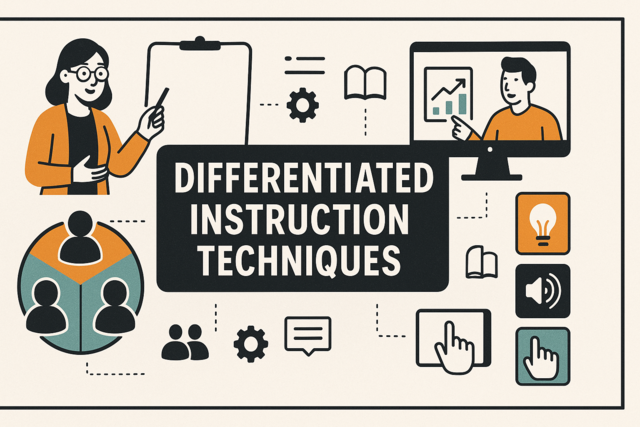 6 hours
0.6 CEUs
Differentiated Instruction Techniques
+ More Info
6 hours
0.6 CEUs
Differentiated Instruction Techniques
+ More Info
-
 6 hours
0.6 CEUs
Mindfulness and Relaxation Techniques for Special Needs Students
+ More Info
6 hours
0.6 CEUs
Mindfulness and Relaxation Techniques for Special Needs Students
+ More Info
-
 4 hours
0.4 CEUs
Understanding and Managing Dyslexia in the Classroom
+ More Info
4 hours
0.4 CEUs
Understanding and Managing Dyslexia in the Classroom
+ More Info
-
 7 hours
0.7 CEUs
Fostering Peer Relationships in Inclusive Classrooms
+ More Info
7 hours
0.7 CEUs
Fostering Peer Relationships in Inclusive Classrooms
+ More Info
-
 7 hours
0.7 CEUs
Using Multi-Sensory Approaches in Special Education
+ More Info
7 hours
0.7 CEUs
Using Multi-Sensory Approaches in Special Education
+ More Info
-
 7 hours
0.7 CEUs
Aligning Curriculum with State Standards
+ More Info
7 hours
0.7 CEUs
Aligning Curriculum with State Standards
+ More Info
-
 3 hours
0.3 CEUs
Preparing Special Education Students for Standardized Tests
+ More Info
3 hours
0.3 CEUs
Preparing Special Education Students for Standardized Tests
+ More Info
-
 4 hours
0.4 CEUs
Leadership Skills for Emerging Leaders
+ More Info
4 hours
0.4 CEUs
Leadership Skills for Emerging Leaders
+ More Info
-
 3 hours
0.3 CEUs
Beyond the Veil: Mysteries of Life After Death
+ More Info
3 hours
0.3 CEUs
Beyond the Veil: Mysteries of Life After Death
+ More Info
-
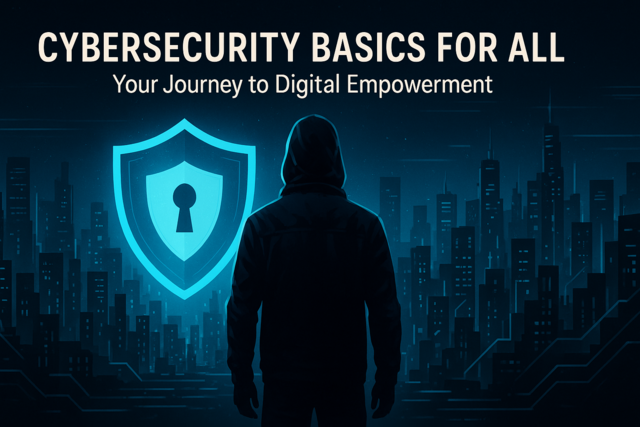 3 hours
0.3 CEUs
Cybersecurity Basics for All
+ More Info
3 hours
0.3 CEUs
Cybersecurity Basics for All
+ More Info
-
 6 hours
0.6 CEUs
Conflict Resolution and Negotiation
+ More Info
6 hours
0.6 CEUs
Conflict Resolution and Negotiation
+ More Info
-
 3 hours
0.3 CEUs
The Role of Peer Support in Trauma Recovery: Building Community and Resilience
+ More Info
3 hours
0.3 CEUs
The Role of Peer Support in Trauma Recovery: Building Community and Resilience
+ More Info
-
 3 hours
0.3 CEUs
Historical Perspectives in Curriculum Development
+ More Info
3 hours
0.3 CEUs
Historical Perspectives in Curriculum Development
+ More Info
-
 7 hours
0.7 CEUs
Promoting Independence and Life Skills
+ More Info
7 hours
0.7 CEUs
Promoting Independence and Life Skills
+ More Info
-
 7 hours
0.7 CEUs
Legal Frameworks in Special Education: IDEA and Beyond
+ More Info
7 hours
0.7 CEUs
Legal Frameworks in Special Education: IDEA and Beyond
+ More Info
-
 6 hours
0.6 CEUs
Fostering a Growth Mindset in Students
+ More Info
6 hours
0.6 CEUs
Fostering a Growth Mindset in Students
+ More Info
-
 3 hours
0.3 CEUs
High-Street to Haute: The Journey to Becoming Fashionable
+ More Info
3 hours
0.3 CEUs
High-Street to Haute: The Journey to Becoming Fashionable
+ More Info
-
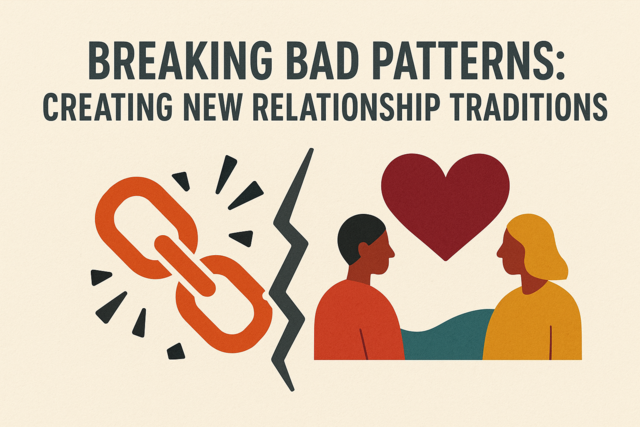 5 hours
0.5 CEUs
Breaking Bad Patterns: Creating New Relationship Traditions
+ More Info
5 hours
0.5 CEUs
Breaking Bad Patterns: Creating New Relationship Traditions
+ More Info
-
 5 hours
0.5 CEUs
Creating Engaging Online Content
+ More Info
5 hours
0.5 CEUs
Creating Engaging Online Content
+ More Info
-
 4 hours
0.4 CEUs
The Love Language Challenge: Transform Your Relationship
+ More Info
4 hours
0.4 CEUs
The Love Language Challenge: Transform Your Relationship
+ More Info
-
 6 hours
0.6 CEUs
Embracing Digital Transformation
+ More Info
6 hours
0.6 CEUs
Embracing Digital Transformation
+ More Info
-
 4 hours
0.4 CEUs
Creative Thinking and Innovation
+ More Info
4 hours
0.4 CEUs
Creative Thinking and Innovation
+ More Info
-
 6 hours
0.6 CEUs
Boundaries and Balance: Essential Insights for Healthy Relationships
+ More Info
6 hours
0.6 CEUs
Boundaries and Balance: Essential Insights for Healthy Relationships
+ More Info
-
 5 hours
0.5 CEUs
Time Travel Mysteries and Paradoxes
+ More Info
5 hours
0.5 CEUs
Time Travel Mysteries and Paradoxes
+ More Info
-
 5 hours
0.5 CEUs
Advanced Customer Relationship Management
+ More Info
5 hours
0.5 CEUs
Advanced Customer Relationship Management
+ More Info
-
 6 hours
0.6 CEUs
Cryptids: Creatures of Folklore and Reality
+ More Info
6 hours
0.6 CEUs
Cryptids: Creatures of Folklore and Reality
+ More Info
-
 5 hours
0.5 CEUs
Understanding and Reducing Bias
+ More Info
5 hours
0.5 CEUs
Understanding and Reducing Bias
+ More Info
-
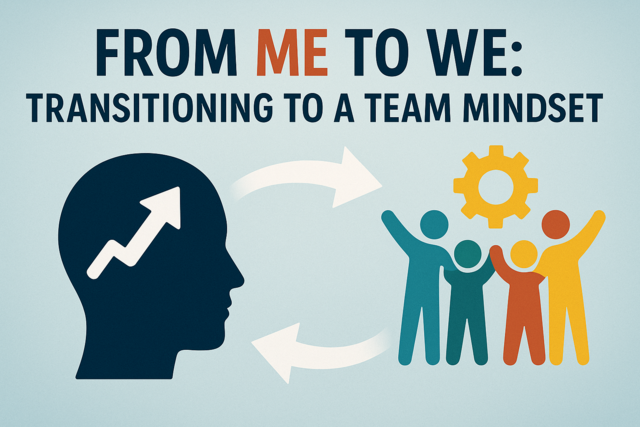 3 hours
0.3 CEUs
From Me to We: Transitioning to a Team Mindset
+ More Info
3 hours
0.3 CEUs
From Me to We: Transitioning to a Team Mindset
+ More Info
-
 7 hours
0.7 CEUs
Self-Care and Wellness Practices
+ More Info
7 hours
0.7 CEUs
Self-Care and Wellness Practices
+ More Info
-
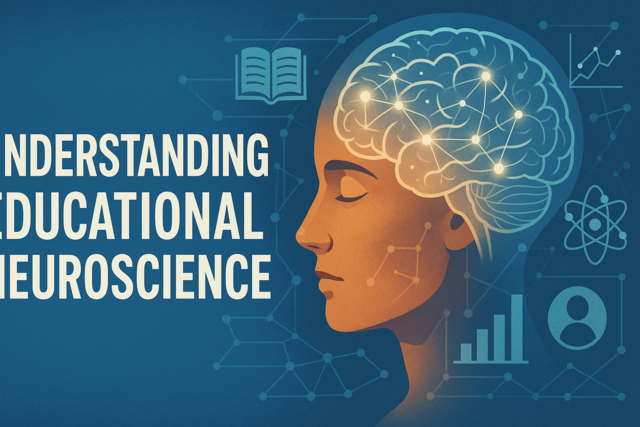 5 hours
0.5 CEUs
Understanding Educational Neuroscience
+ More Info
5 hours
0.5 CEUs
Understanding Educational Neuroscience
+ More Info
-
 7 hours
0.7 CEUs
Pioneers of Anomalous Sciences
+ More Info
7 hours
0.7 CEUs
Pioneers of Anomalous Sciences
+ More Info
-
 6 hours
0.6 CEUs
The Friendship Formula: Building Trust in Personal Networks
+ More Info
6 hours
0.6 CEUs
The Friendship Formula: Building Trust in Personal Networks
+ More Info
-
 4 hours
0.4 CEUs
Raising Emotionally Intelligent Children: A Guide for Parents
+ More Info
4 hours
0.4 CEUs
Raising Emotionally Intelligent Children: A Guide for Parents
+ More Info
-
 6 hours
0.6 CEUs
Supporting Students with Special Needs
+ More Info
6 hours
0.6 CEUs
Supporting Students with Special Needs
+ More Info
-
 3 hours
0.3 CEUs
Special Education Advocacy: Working with Parents and Families
+ More Info
3 hours
0.3 CEUs
Special Education Advocacy: Working with Parents and Families
+ More Info



